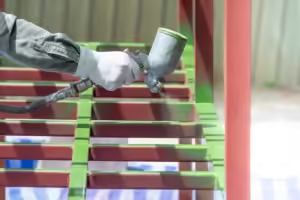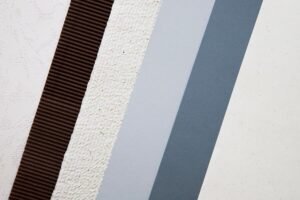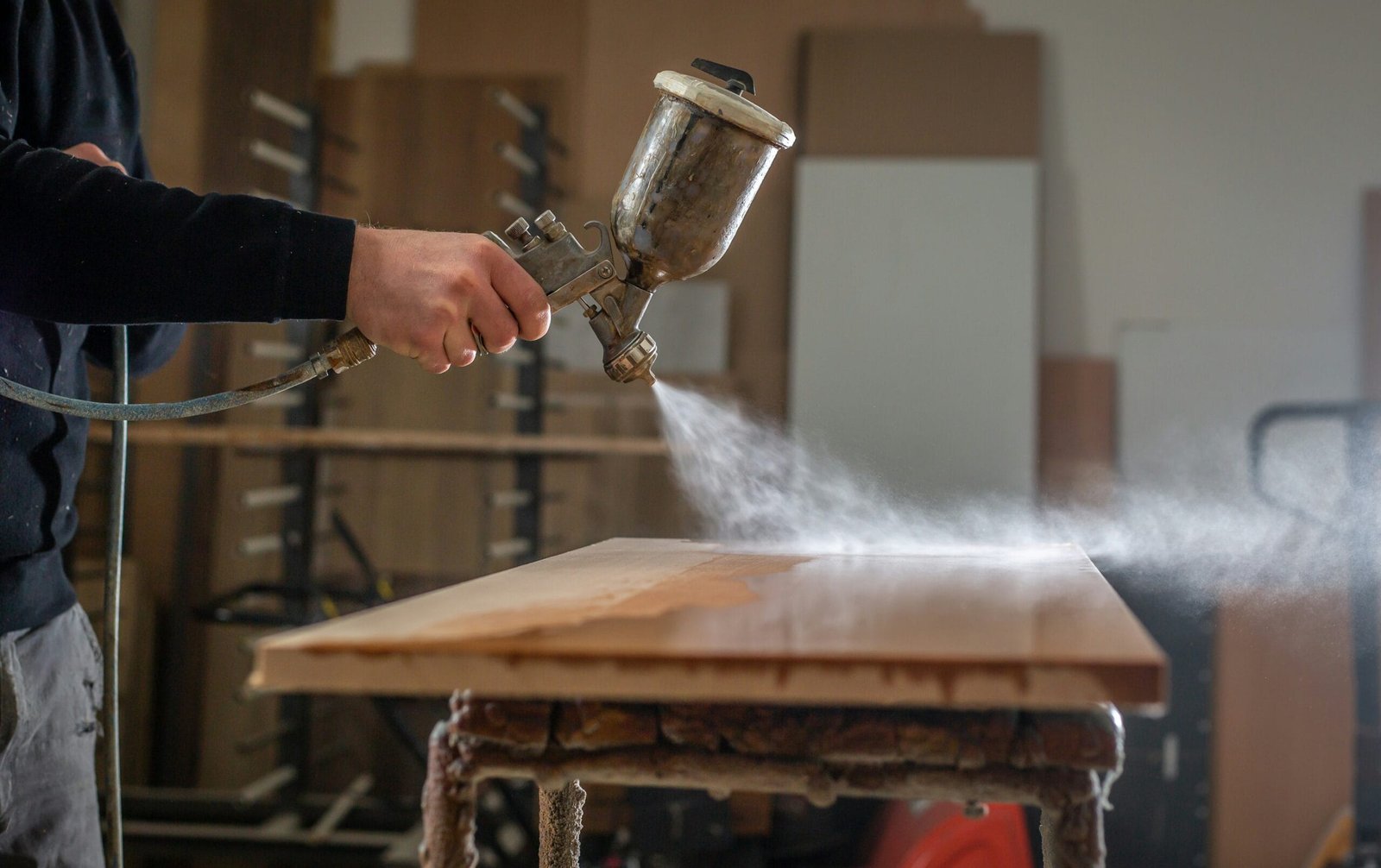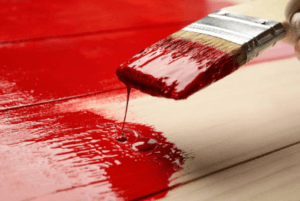Introduction to Corrosion-Resistant Coatings
Corrosion is a natural process that leads to the deterioration of materials, particularly metals, due to chemical or electrochemical reactions with their environment. This phenomenon can result in significant structural damage and economic loss across various industries, including construction, automotive, and manufacturing. The effects of corrosion manifest not only in reduced material strength but also in subsequent maintenance and replacement costs. Consequently, protecting materials from corrosion is critical to enhance their lifespan and functionality.
Corrosion-resistant coatings serve as a barrier between the substrate and the corrosive environment, significantly mitigating the impact of moisture, chemicals, and other harmful elements. These coatings are particularly vital in industrial applications where equipment is frequently exposed to harsh conditions. For instance, marine environments, where saltwater can accelerate corrosion, necessitate robust protective measures to prolong the life of vessels and infrastructure. The application of corrosion-resistant coatings can thus lead to increased reliability, safety, and cost-effectiveness in operations.
A range of materials can be employed as corrosion-resistant coatings, including paints, varnishes, and galvanic coatings. The selection of an appropriate coating depends largely on the specific requirements of the application, such as the type of substrate being protected, the environmental conditions it will encounter, and the desired aesthetic finish. Mithila Paints offers an array of specialized coatings designed to provide optimal protection against corrosion while also addressing various industrial and aesthetic needs. As we explore the range of offerings from Mithila Paints, it is essential to understand both the underlying importance of corrosion prevention and the technologies that make these coatings effective.

The Science Behind Corrosion
Corrosion is fundamentally an electrochemical process that leads to the degradation of materials, primarily metals, due to their interaction with environmental factors. Understanding corrosion involves a detailed analysis of the chemical and physical reactions taking place. At its core, corrosion occurs when metal atoms lose electrons in a reaction with ions or molecules present in their environment, resulting in the deterioration of the material.
There are several prominent types of corrosion, including uniform corrosion, galvanic corrosion, pitting, and crevice corrosion. Uniform corrosion is characterized by a consistent rate of deterioration across the surface of a metal, often facilitated by the presence of moisture and oxygen. In contrast, galvanic corrosion occurs when two dissimilar metals are in electrical contact in the presence of an electrolyte, leading to accelerated degradation of the less noble metal. Pitting corrosion involves localized areas of corrosion, often appearing as small pits on the surface. Crevice corrosion results from stagnant solutions in confined spaces, creating environments that can lead to significant material loss.
Various factors contribute to the corrosion process, including moisture, temperature, pH level, and the presence of specific ions, such as chlorides. Identifying these factors is crucial for mitigating corrosion risks, especially in environments that expose metals to harsh conditions. The science of corrosion not only informs our understanding of material failure but also drives the innovation of protective measures, such as corrosion-resistant coatings.
Coatings serve as barriers that protect metal surfaces from environmental elements that facilitate corrosion. By applying these coatings, we can significantly enhance the longevity and durability of metal structures. Moreover, developments in the field of materials science continue to yield new and more effective formulations for corrosion-resistant coatings, optimizing their protective capabilities and efficiency in combatting corrosion.
Types of Corrosion-Resistant Coatings Available
Corrosion-resistant coatings are essential for protecting various substrates from deterioration caused by environmental factors. These coatings are generally categorized into two main types: organic and inorganic coatings. Each type possesses distinct characteristics, benefits, and suitable applications, thereby making them effective in diverse situations.
Organic coatings typically consist of polymer-based materials, such as epoxy, polyurethane, and acrylic. Due to their versatile nature, these coatings are widely adopted in the industrial sector. Epoxy coatings, for instance, offer excellent adhesion and chemical resistance, making them suitable for use on metal surfaces exposed to harsh environments, such as marine applications. Polyurethane coatings are celebrated for their flexibility, durability, and UV resistance, making them ideal for outdoor applications. Acrylic coatings, on the other hand, are often chosen for their rapid curing characteristics and ease of application, providing a robust protective layer against corrosion.
In contrast, inorganic coatings are derived from inorganic compounds and tend to exhibit higher thermal stability and durability compared to their organic counterparts. Zinc-rich coatings are among the most common inorganic options, providing cathodic protection to steel surfaces by sacrificing their own zinc element to prevent rust formation. Another notable inorganic coating is the ceramic coating, which is known for its resistance to high temperatures and corrosive substances, making it applicable in environments such as power plants and chemical processing facilities.
Both organic and inorganic corrosion-resistant coatings have unique benefits that make them suitable for specific applications. While organic options excel in versatility and aesthetic appeal, inorganic coatings offer superior durability and thermal resistance. Understanding the different types of coatings available enables stakeholders to make informed decisions based on environmental conditions and substrate requirements.

Mithila Paints: Innovating Corrosion Resistance
Mithila Paints has established itself as a leader in the development of innovative corrosion-resistant coatings. Founded in response to the growing need for high-quality protective finishes that can withstand various environmental stressors, the company has concentrated its efforts on creating products that prolong the lifespan of surfaces. Their commitment to technological advancement positions them at the forefront of the paints and coatings industry.
The company emphasizes research and development, dedicating significant resources to the exploration of new materials and formulations that enhance corrosion resistance. Mithila Paints collaborates with a range of experts, including chemists and materials scientists, to innovate and test new coating technologies. This collaborative approach not only accelerates the development timeline but also ensures that the formulations are both effective and sustainable. One of the key focuses of their research is to minimize the environmental footprint of their coatings while maximizing their protective capabilities.
Quality assurance is another cornerstone of Mithila Paints’ operations. The company implements stringent quality control measures throughout the manufacturing process to guarantee that each product meets their high standards. Every batch of paint undergoes rigorous testing to verify its performance against corrosion, ensuring only the best products reach the market. By prioritizing quality, Mithila Paints builds trust with its customers and distinguishes itself from competitors.
Furthermore, Mithila Paints actively monitors industry trends to ensure their products remain relevant and effective. This proactive approach involves staying informed about emerging technologies and changing regulations in the coatings market. By adapting their strategies and innovations, Mithila Paints guarantees they continually deliver corrosion-resistant coatings that meet current and future demands of various sectors, from industrial applications to residential use.

Comparative Analysis: Mithila Paints vs. Competitors
When examining the landscape of corrosion-resistant coatings, Mithila Paints stands out for several reasons when compared to its major competitors. Performance is a key metric, and Mithila Paints’ formulations are designed to provide exceptional resistance to moisture, chemicals, and rust. This is crucial for industries where harsh environmental conditions are the norm. In various laboratory tests, Mithila’s coatings have demonstrated superior adhesion and flexibility, enabling them to withstand extreme temperatures and mechanical stress better than many rival products.
Durability is another vital consideration. Mithila Paints offers a range of coatings that not only protect surfaces but also extend the life of the underlying materials. Competitors’ products, while effective, often require more frequent reapplication, leading to higher long-term costs. In contrast, Mithila’s products, thanks to advanced technology and quality materials, aim for longevity, thereby reducing maintenance efforts for consumers and industries alike.
Price is frequently a decisive factor for consumers and businesses. Mithila Paints strives to maintain a competitive edge without sacrificing quality. While some competitors may offer lower initial pricing, the overall value proposition may falter when considering durability and performance. Customers report that investing in Mithila Paints’ coatings can result in cost savings over time due to less frequent need for application and maintenance.
Customer satisfaction surveys highlight that users of Mithila Paints consistently express greater satisfaction regarding product effectiveness and performance compared to their experiences with competitors. This positive sentiment is often reflected in repeat purchases and recommendations within various industries using corrosion-resistant coatings. Mithila’s commitment to quality assurance and customer service further solidifies its position in the market.
Applications of Mithila’s Corrosion-Resistant Coatings
Mithila Paints’ corrosion-resistant coatings are widely utilized across various industries, demonstrating their effectiveness in combating corrosion while enhancing the lifespan of components. One prominent application is in the automotive industry, where these coatings protect vehicles from elements, including rain, salt, and pollutants. By providing a robust barrier against corrosive substances, Mithila’s coatings help maintain the vehicle’s aesthetic appeal and structural integrity, ultimately leading to reduced maintenance costs and improved safety for consumers.
In addition to automotive uses, the marine industry extensively employs Mithila’s corrosion-resistant coatings. Boats, ships, and offshore structures are regularly exposed to harsh marine environments, making corrosion a significant concern. Mithila Paints offers specialized coatings that withstand the rigors of saltwater exposure, UV radiation, and extreme weather conditions. As such, these coatings contribute to the longevity of marine vessels and infrastructures, proving to be a valuable investment for operators seeking to minimize repair and replacement expenses.
The construction sector also benefits tremendously from Mithila’s innovative coatings. Buildings and infrastructure projects require materials that can resist corrosion due to environmental factors such as moisture, air pollution, and temperature fluctuations. Mithila’s coatings are designed to protect metals used in construction, such as steel rebar, HVAC systems, and structural beams. This application ensures not only the durability of the construction materials but also the safety and aesthetic value of the overall structure.
Lastly, in the manufacturing industry, various machinery and equipment are at risk of corrosion, which can hinder operational efficiency. Mithila Paints provides coatings applicable to manufacturing tools and machinery, ensuring they remain functional over time and reducing downtimes. Implementing these coatings enhances productivity across manufacturing facilities through their reliable corrosion protection.

Customer Testimonials: Real-World Experiences
Customers who have utilized Mithila’s corrosion-resistant coatings consistently report significant advantages, which underline the efficacy of these products in real-world applications. One notable testimonial from a prominent manufacturing facility highlighted the remarkable longevity of the coating when applied to metal surfaces exposed to harsh environmental conditions. According to the plant manager, “Since we switched to Mithila’s coatings, we’ve noticed a drastic reduction in rusting and corrosion. Our maintenance costs have fallen by over 30% as we no longer need to conduct frequent repairs.” This real-world scenario illustrates how Mithila’s solutions can lead to considerable cost savings through enhanced durability.
In another case, a construction company specializing in infrastructure projects shared their experience. They utilized Mithila’s corrosion-resistant coatings on a bridge that spans several bodies of water. The project manager noted, “The application was smooth, and the results exceeded our expectations. Not only do the coatings provide robust protection, but the aesthetics of the finish also received positive feedback from stakeholders. It’s a win-win situation.” Such testimonials demonstrate the dual benefit of functionality and visual appeal offered by Mithila’s products.
Moreover, a homeowner who opted for Mithila’s exterior coatings for their coastal property reported a drastic improvement in preserving the integrity of metallic fixtures. They stated, “Living by the ocean means battling salty air, but Mithila’s coatings have protected our fixtures remarkably well for over three years without visible degradation.” This statement reinforces the suitability of Mithila’s coatings for diverse applications, particularly in challenging environments prone to corrosion. Collectively, these testimonials establish the credibility of Mithila’s offerings, signifying that their corrosion-resistant coatings are not only effective but also contribute to lower long-term maintenance costs across various sectors.
Sustainability and Environmental Impact
Mithila Paints has established a robust commitment to sustainability as an integral part of its production process for corrosion-resistant coatings. This dedication is reflected in several eco-friendly practices aimed at reducing environmental impact while keeping product efficacy high. The company prioritizes the use of sustainable materials sourced responsibly, ensuring that both raw materials and processes align with environmentally friendly standards.
One of the key aspects of Mithila Paints’ sustainability initiative is the integration of natural pigments and non-toxic components in its formulations. By opting for renewable resources and minimizing harmful chemicals, the company not only produces high-quality coatings but also reduces hazardous waste and the carbon footprint associated with traditional manufacturing processes. This approach ensures that the corrosion-resistant coatings offered by Mithila Paints do not compromise environmental integrity while providing long-lasting protection against corrosion.
Furthermore, Mithila Paints implements a comprehensive waste management system. This system promotes recycling and repurposing of materials, significantly decreasing landfill contributions. The adoption of advanced technologies throughout the manufacturing stages is also aimed at enhancing energy efficiency, which contributes to lowering greenhouse gas emissions. These actions underscore the company’s holistic strategy to environmental stewardship.
As the demand for sustainable solutions rises, Mithila Paints continues to innovate and improve its product offerings to remain at the forefront of eco-conscious manufacturing. By evaluating the lifecycle of their corrosion-resistant coatings, from sourcing to end-of-life disposal, the company ensures that each step aligns with sustainability goals. This thorough consideration demonstrates their commitment not only to product performance but also to preserving the environment for future generations.

Conclusion
As we have explored throughout this blog, corrosion-resistant coatings stand as a critical line of defense against environmental degradation in various industries. Mithila Paints has made significant contributions in this domain, offering innovative solutions that not only protect but also enhance the aesthetic appeal of surfaces. The combination of durability and visual attractiveness is essential in today’s construction and manufacturing sectors, where both functionality and design are prioritized.
One of the key themes discussed is the importance of selecting the right corrosion-resistant coating for specific applications. Mithila Paints provides a range of products tailored to distinct industrial needs, ensuring that customers receive optimized protection based on environmental conditions, substrate materials, and usage scenarios. Moreover, the adoption of sustainable and environmentally friendly materials is becoming increasingly prominent, aligning with global trends toward green building and compliance with stricter environmental regulations.
Looking ahead, the future of corrosion resistance is likely to be influenced by advancements in technology and materials science. For instance, the integration of nanotechnology in coatings may render surfaces even more effective against corrosion while minimizing maintenance costs. Furthermore, developments in smart coatings, which respond to environmental changes, could redefine how we approach surface protection. Advancements in digital monitoring technologies may facilitate real-time assessments of coating integrity, allowing for timely interventions.
In conclusion, as the market evolves, Mithila Paints is well-positioned to continue leading the way in innovations that improve corrosion resistance. By committing to research and development and embracing new technologies, the company is set to enhance the longevity and performance of coatings. The ongoing pursuit of improved corrosion-resistant solutions will undoubtedly play a vital role in sustaining infrastructure and assets well into the future.


